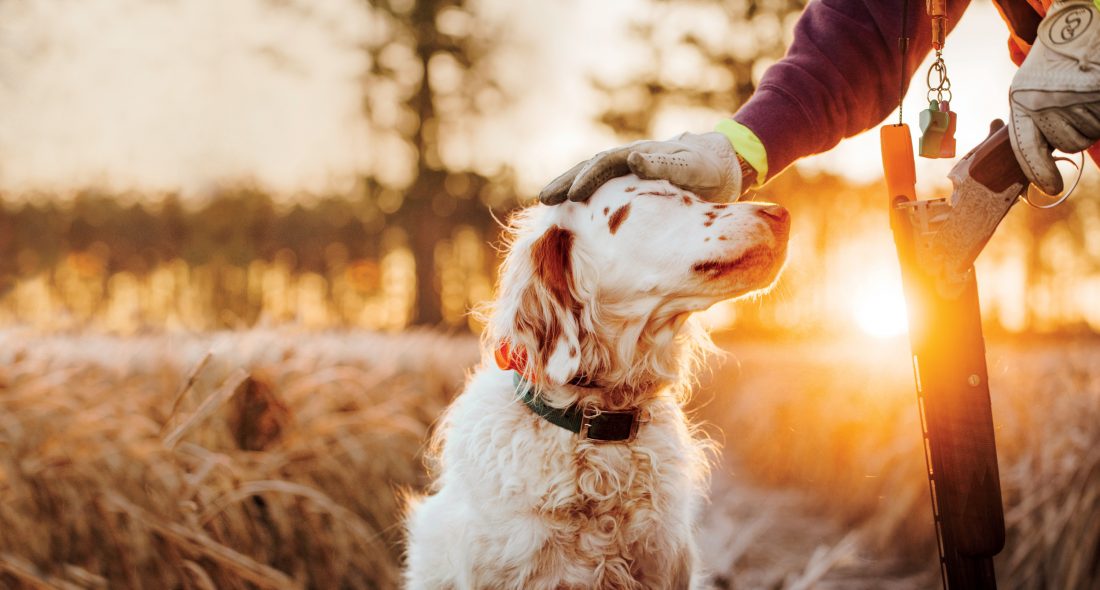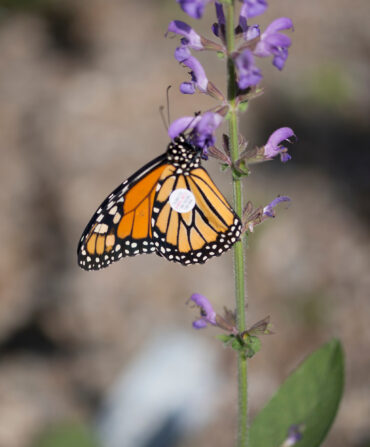Jake parts the grass like Moses, a rangy, muscular pointer shouldering aside curtains of waist-high little bluestem until he skids to a halt, flanks quivering, breath heaving in the cold air. It’s hard to take your eyes off such a sight: a dog with a nose full of bird. Now it’s my move. But I’m not quite ready to break the spell.
I look around. Jake and I are standing in a 50-acre field of native prairie grasses, edged by pines and hardwoods. Through the trees there’s another glint of sunlight and golden reeds—another piece of prairie in the waiting. On the far side of a distant road, 120 acres of burnished switchgrass sway in the breeze. Ribbons of partridge pea unfurl along the field borders. All together, it looks like a little bit of Kansas has been transplanted into the pines and oaks of the North Carolina Piedmont. But this quail preserve isn’t trying to be something it’s not. On the contrary: At George Hi Plantation, there’s an intense focus on being what it used to be.
Using seeds from native North Carolina prairies—some of which come from a rare 5-acre patch of never-plowed Carolina soil—George Hi’s owner and managers are restoring a long-lost habitat, and setting the table for a new chapter in Southern quail hunting. “It was a pretty simple concept, really,” explains Charles Holden DuBose, Jr., a Clinton, North Carolina, businessman whose family has owned this nearly 1,000-acre estate for 74 years. “We set out to create the most authentic quail habitat possible, as natural and as original as we could.” The fact that it meant restoring remnant prairie habitats in the midst of heavy forest surprised him as much as anyone.
Despite common belief, the precolonial South was not a vast unbroken forest. Across the region, from the Carolina coasts through the mid-South and beyond, grasslands large and small pocked the oak-hickory forests of the sprawling interior woodlands. In the Piedmont region, a sixteenth-century Spanish explorer wrote of “very large and good plains.” John Lawson, who crisscrossed the Carolinas in 1701, mentions one long ride of twenty-five miles over “pleasant savanna ground, high and dry, having very few trees upon it.” Elk and bison roamed this forgotten South, maintaining grasslands flush with plants now associated with Midwestern prairie, such as little bluestem, Indian grass, and native sunflowers.
Over the past three years, George Hi Plantation has emerged as a living laboratory for restoring native grasslands, and is a wildly successful test case of how quail plantations can benefit from turning back the clock. These native plants are gorgeous to look at, and tough enough to handle snow and ice and hard hunting. With dense seed heads but relatively sparse stalks, they provide plenty of cover from predators but allow young quail chicks to move about the ground easily. They’ve been a game changer for George Hi, giving pen-raised birds a greater chance to take on wild characteristics, and wild birds a boost in reproduction.
Pointing dogs have plowed across George Hi’s landscape of pines and old fields since the mid-1850s. The DuBose family purchased the property in 1942, and while it was run as a shooting preserve as early as the 1980s, it’s been under Charles DuBose, Jr., that a renewed commitment to both habitat and hospitality has put the property on the wish list of quail hunters around the country.
Three years ago, DuBose brought in a Vermonter, Dan O’Connor, to transform George Hi from a family retreat to a destination shooting preserve. O’Connor’s sporting pedigree is unmatched. The longtime director of outdoor services for the Orvis Company, he’d run the various Orvis Endorsed programs and Orvis Shooting and Fly-Fishing Schools, headed up the company’s custom gun and gunsmithing divisions, and consulted at its famed Sandanona Shooting Grounds in upstate New York for more than a dozen years.
O’Connor immediately saw the potential in George Hi. A small lake anchors the property, with a sprawling lodge, restored farmhouses, and historic outbuildings sprinkled around the shore. Radiating from the complex is a mosaic of pinewoods and oak flats, pocked with large fields and latticed with clear creeks. The outfit had sputtered along for a few years as a commercial quail operation, but it was a far cry from the well-known quail lodges of Florida and Georgia. When O’Connor ran across Internet references to the “lost landscapes” of the prairie South, and the pioneering work of a native plants nurseryman named Don Lee, all the pieces came together.
A ninth-generation North Carolina farmer, Lee had a passion for native plants of the Southeast, and had developed a boutique side business growing seeds for native grasses, forbs, and wildflowers. That business, Garrett Wildflower Seed Farm, named for his grandfather, was growing quickly, riding a rising tide of interest in indigenous plantings. When O’Connor and DuBose visited the seed farm and heard Lee’s vision for a new era in wildlife restoration, they were sold.

Photo: Andrew Kornylak
Field Of Dreams
Covering ground in search of birds.
There’s hardly been a day since when some type of restoration activity hasn’t had George Hi buzzing. Forest stands have been opened up to flood the floor with sunlight. Hardwood saplings have been removed by the tens of thousands. Controlled burn efforts doubled. Soybean and cornfield edges have been pushed in by 30 to 40 feet to make room for borders of partridge pea and sorghum. And nearly 300 acres—with more to come—have been restored to native species, including vast swaths of pure little bluestem grasses.
“This is part of a nationwide movement to restore these native grasslands,” Lee says. “Landowners are growing more conscious and concerned about habitat for wildlife and for native pollinators. And the South, with its temperate climate, is a perfect place to make this work.” While it’s a challenge, he admits, to match the right plant species with the very different soil types around the South, “it’s phenomenal what can happen on tracts of land that are as small as just a couple hundred acres.”
Or in a field of 50 acres of restored grasslands. When the quail get up in front of Jake, they burst from the bluestem like birds that have made themselves at home in the prairie. They make a break for the tangled creek bottom, and as my gun barks twice, it’s apparent that they aren’t about to make it easy for a hunter temporarily bewitched by a land that time forgot.









